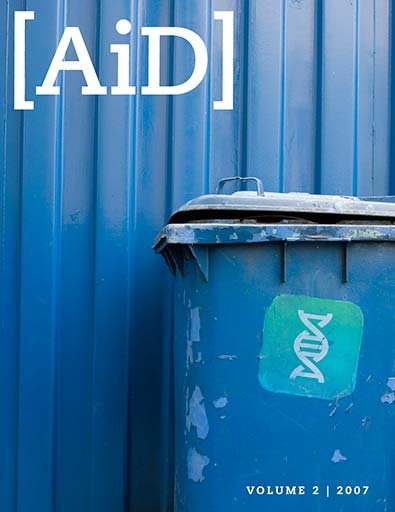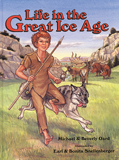
Movie Review: Arctic Tale—Exaggerating the Effects of Global Warming
Keywords: movie review, documentary, media, global warming, Arctic, environment, environmentalism, National Geographic, man, sea ice, polar bears, endangered animals
The documentary Arctic Tale is about the adventures of a baby walrus, Selah, and a baby polar bear, Namu, growing up in the harsh environment along the shoreline of the Arctic Ocean. The filming of the animals by National Geographic Films was spectacular. The footage from inside a polar bear den was outstanding. Queen Latifah superbly narrated the documentary. The movie is rated G, but there are a few scenes of animals killing other animals that may be disturbing for young children.
No evolution or long ages!
The documentary was delightful in many ways in that there was no evolution or old ages mentioned in the whole movie. The narrator referred to the animals as living in the area for thousands of years, not millions of years. But this may have nothing to do with a conscious effort to keep evolution out, since it is true that the animals must have lived in the Arctic only thousands of years. The ice sheet in Canada melted from near the Arctic shoreline about 8,000 years in the uniformitarian timescale. Within the creation timescale, the time would be about 4,000 years ago. However, the northern shore of Alaska was not glaciated, so the movie could have stated that they lived and evolved along the Alaska coast for millions of years. But the movie left out this belief.
Another positive aspect to the movie is that it stressed how animal behavior is very complicated. For instance, the walrus male courting sounds made underwater are so complex that researchers are unable to figure them out yet. Birth is also said to be a miracle.
Movie showcases global warming
It does not take long before you find out that Hollywood is pushing another agenda. This time it is global warming. Throughout the movie, the narrator says such statements as: the world is changing, the climate has become warmer than anytime before, the water is warmer, the ice is thinner and not as hard, the ice breaks up soon and reforms later, it’s a disappearing environment, etc. Always, these changes are projected as harmful to the animals, for instance because polar bears need ice to hunt seals hiding below the ice. One scene even shows Namu’s brother dying in a big blizzard. The narrator ascribed the death to starvation because mother polar bear could not find enough food. The death could have been due to the fierce blizzard (described below). The movie states that, because of global warming, both populations of walruses and polar bears were forced to flee to Rock Island, 250 miles away.
The documentary then ends with the statement that the Arctic Sea ice has decreased 20% and will disappear by 2040. A number of children urge us that we must do something: plant trees, change the type of light bulbs we have in our homes, drive hybrid cars, use cold water for washing, turn the heat down in the winter, etc. Although the movie does not tell us who or what is to blame for the global warming, it hints that the cause is us, since the children urge us to change our lifestyle. Nothing was said about any natural causes or the possibility that the net effect of global warming could be positive. (There are positive benefits, such as northern homes can save energy, Canadian farmers could harvest bumper crops, there will be more weeks of shipping in Arctic waters, more fishing grounds could open up, plants can grow better with more carbon dioxide, and we will save more lives since more people die of the cold than the heat.)
Contradictions
There are a few seemingly contradictory aspects of the global warming motif in the movie. For instance, after saying how the ice has not returned and that there was a lack of snow, a huge blizzard hits. This blizzard is no ordinary blizzard, but the strongest of any previous years. Temperatures plummet down to 40 below zero with winds of 80 mph. The narrator makes the blizzard seem like an effect of global warming, which some environmentalists believe true, but is anomalous. The strength of a winter-type storm is generally proportional to the north-south temperature difference. If the polar areas were warmer, the temperature difference would be less and storms weaker.
Another problem with the blizzard episode is that the cold air for the blizzard has to be generated in the Arctic before the blizzard, so why is there a problem with the ocean failing to freeze back up? Furthermore, warmer air holds more moisture and so there should be even more snow, not less.
The documentary also slips at a few other spots. The narrator states that the ice was three months late one year, which seems like an impossibility. Usually, the summer-sea ice melting only lasts a total of three months. She also dramatizes that the animals had to flee to Rock Island. But how did the animals know where it was, if their swimming to it was a new strategy of survival?
Furthermore, the animals did survive. It is difficult to know how hungry they really were; the narrator points out their hunger often, and so, it could just be dramatization.
At the end of the documentary, the children in the movie audience were encouraged to ask their teachers about global warming. The problem with this is that very few teachers know that much about global warming, unless that is their area of expertise. And what they do know, they may have picked up from biased reports from a newspaper or university. It is unlikely that many will have a balanced, well-informed view of global warming.
Is global warming caused by man?
So what is that balanced view? A balanced view is to examine both sides of an argument and examine the issue carefully.1 The total amount of global warming is only 1.2°F since about 1880. Carbon dioxide has increased a little more than 30%, while other greenhouse gasses have risen another 30% in “carbon dioxide equivalency units.” Furthermore, there are natural long-term fluctuations in climate, such as the Little Ice Age between about 1300 and 1880 in which all the glaciers in the world advanced. Before the Little Ice Age, there was the Medieval Warm Period. Neither of these temperature oscillations were due to increases in carbon dioxide, but were likely due to fluctuations in the amount of solar radiation. There are also short period fluctuations in the amount of volcanic dust in the stratosphere that reflects some sunlight back to space.
Right now, the proportion of the warming caused by carbon dioxide and natural fluctuations is unknown and controversial. So, until further information is available from balanced research, I split the difference half due to man and half due to natural fluctuations, since both effects should cause the temperature to increase. This means that a 60% increase in carbon dioxide (including the equivalency units from other greenhouse gases) has caused only a 0.6°F increase in global average temperature.
Complex computer models that double the carbon dioxide while leaving all other variables the same report an increase in global temperature from 3 to 11°F. But nature shows that a doubling of carbon dioxide would produce a 1°F increase in temperature.1 There could be some variable temporarily holding back the temperature increase from the 60% increase in carbon dioxide, such as air pollution, but it is doubtful the retardation is that significant.
Obviously, these models are way too sensitive to the increase in carbon dioxide. They also have other problems. Unfortunately, too many people take these model numbers as truth. No wonder some are panicked!
The Sea Ice is Decreasing
As far as the Arctic is concerned, global warming is more significant because the melting of snow and ice causes a reinforcement of the warming. So, it is not surprising that the Arctic temperatures have warmed significantly more than the global average and that sea ice is decreasing. In the various reports I read, there are conflicting variables and interpretations of the actual polar temperature increase and the decrease in sea ice.2 It can be difficult to sort out what is really happening, especially since there is such a bias to blame all the warming on man and that global warming will have a net harm. Overall, the movie figure of 20% reduction in summer sea ice cover over the years is probably close to correct. This is probably the only aspect of the movie that was not exaggerated. Whether the sea ice will disappear by 2040 is another matter.
Are Polar Bears Endangered?
The next question of whether polar bears and other animals will be seriously threatened is even more difficult to determine. The big problem is that there is little data on the subject. One Christian Science Monitor web article provided a balanced assessment in Canada.3 Apparently polar bears are said to be increasing in northeast Canada, but this could be due to conservation efforts and a hunting ban on harp seals. Polar bear populations are in decline in at least two out of thirteen polar bear populations. It seems too soon to tell, but the impression I have, based on this one article, is that for Canada as a whole, the total population of polar bears is staying about the same.
Can We Do Anything about It?
Yes, we can do simple things to decrease the amount of carbon dioxide we put into the air, as the children recommended. We would even save money with most of these recommendations. More radical changes would come with a severe economic price and likely are not worth it. Some estimate that it could cost 200 billion a year to fight global warming. Since the effect is so small globally, there is the question of whether any of our efforts would do any good as far as reducing the temperature.
So, overall, the documentary is worth seeing, although most of it is exaggerated. We need to educate ourselves and our children on the issue of global warming and help them to see the biases in Hollywood and the media on this and other important issues.
Footnotes
- M. Oard, Global Warming, Answers 1(2):24-26, 2006. Oard, M., Human-Caused Global Warming Slight So Far, Journal of Biblical and Scientific Studies, AiG online journal, 2006.
- R. A. Kerr, Will the Arctic Ocean lose all its ice? Science 286:1,828, 1999. T. Vine, Fram Strait ice fluxes and atmospheric circulation: 1950-2000, Journal of Climate 14:3,508-3,517, 2001. J. C. Comiso and C. L. Parkinson, Satellite-observed changes in the Arctic, Physics Today 57(8):38-44, 2004. N. Lubick, 2006. Arctic amplification: the northern latitudes provide early warning for global climate change, Geotimes (3):30-33, 2006. Q. Schiermeier, On thin ice, Nature 441:146-147, 2006.
- F. Langan, Canadian controversy: how do polar bears fare? http://www.csmonitor.com/2007/0503/p13s01-wogi.html, 2007.
Recommended Resources

Answers in Genesis is an apologetics ministry, dedicated to helping Christians defend their faith and proclaim the good news of Jesus Christ.
- Customer Service 800.778.3390
- Available Monday–Friday | 9 AM–5 PM ET
- © 2025 Answers in Genesis


